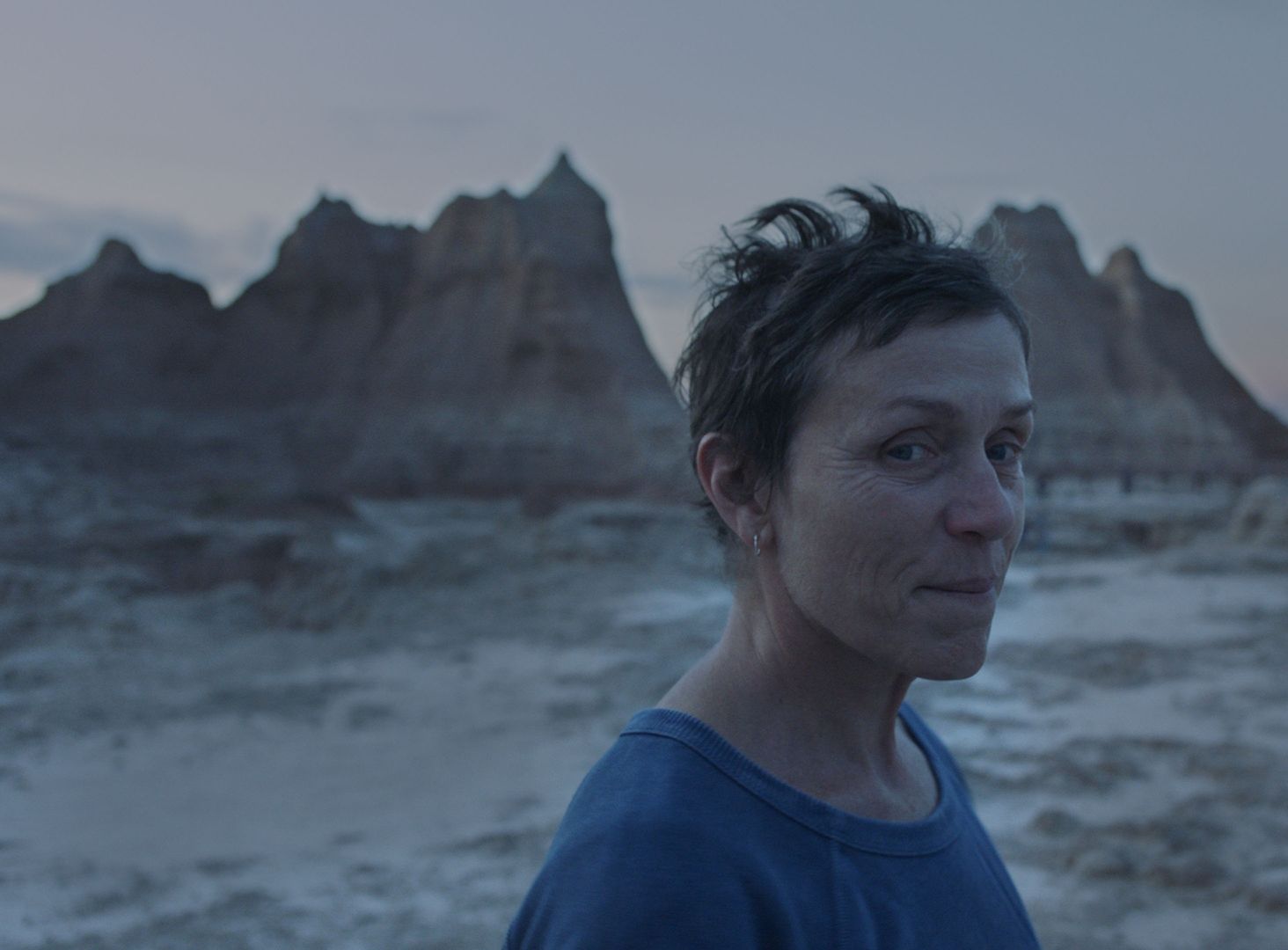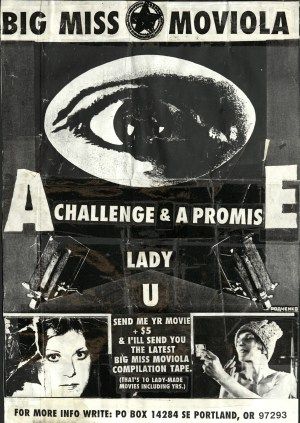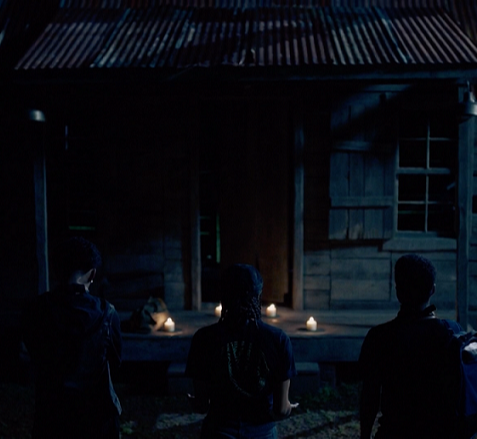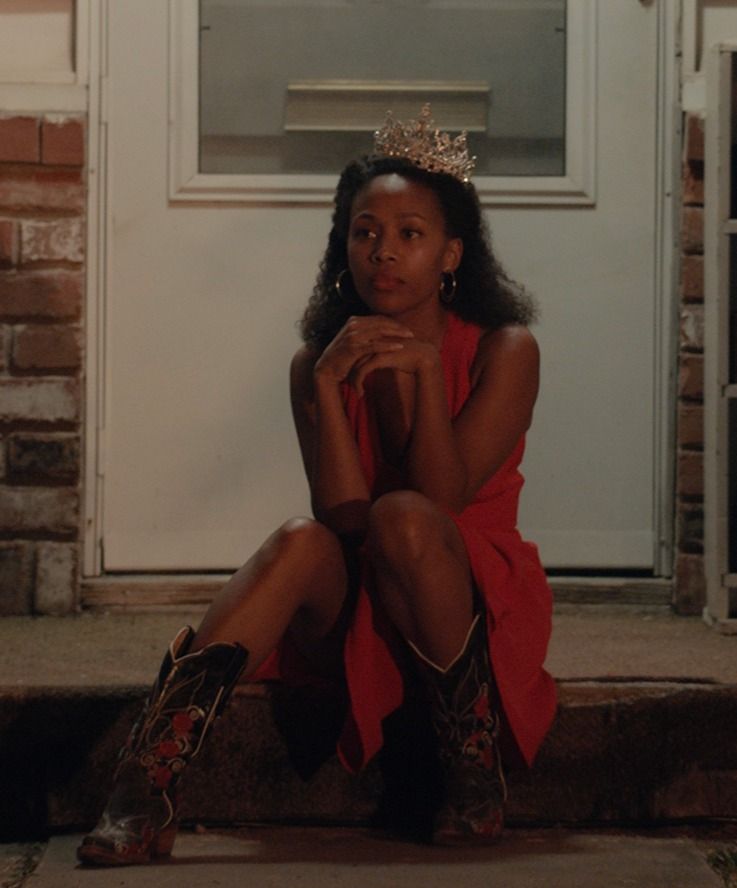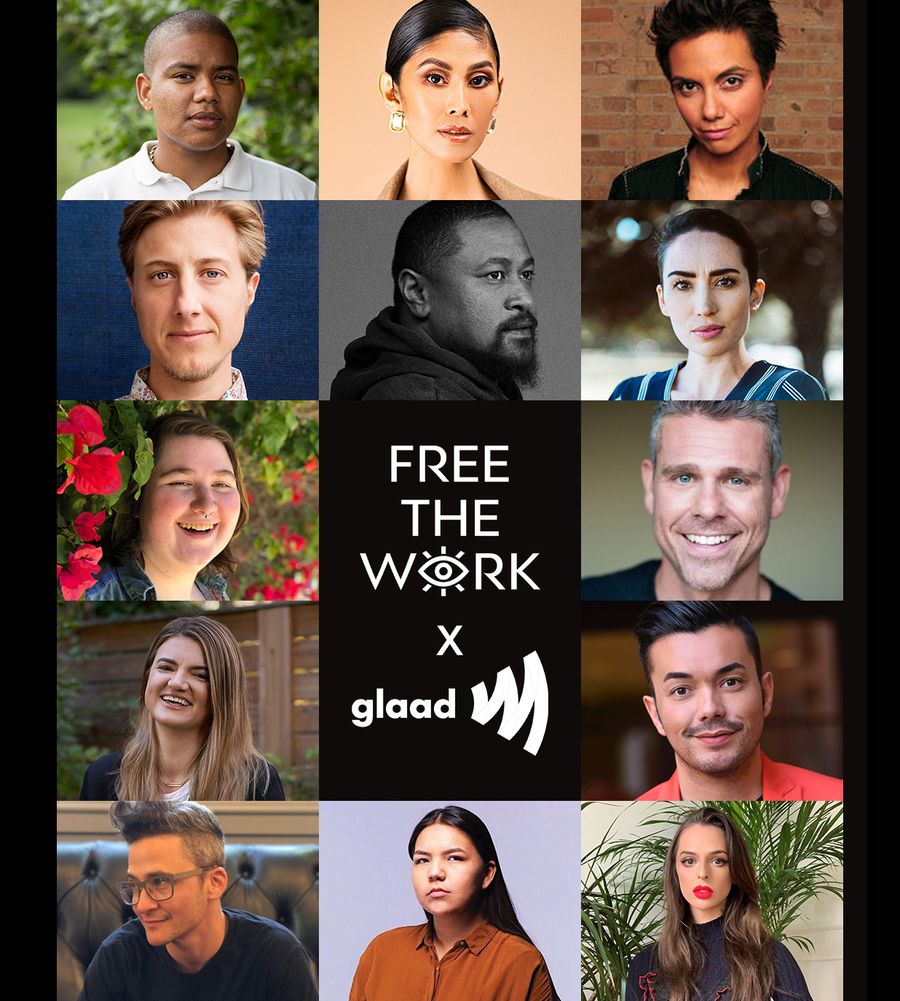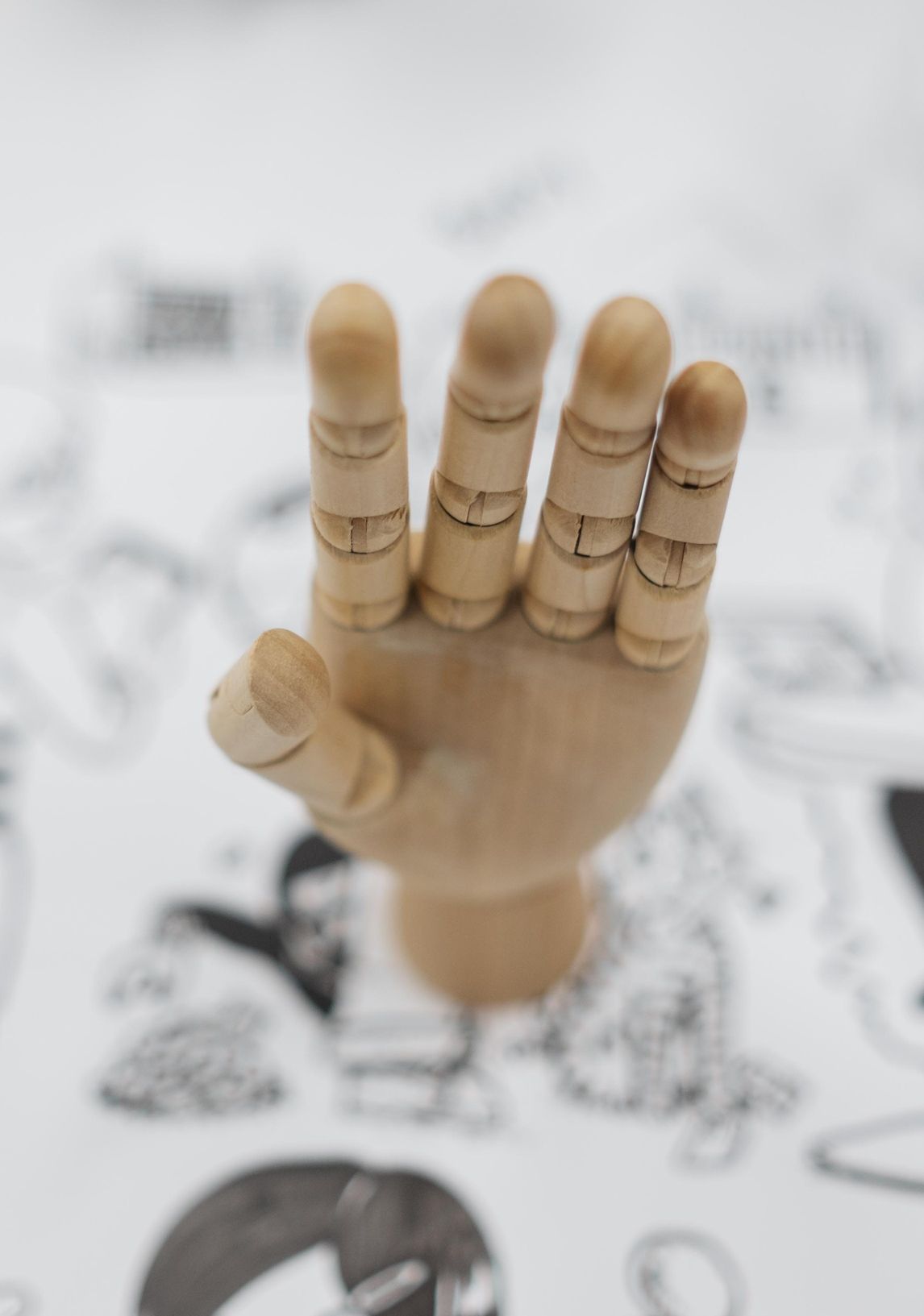All photos courtesy of Searchlight
Mollye Asher and Chloé Zhao met in 2007 at the NYU Graduate Film Program. They were in the same class and became fast friends over their love for Wong Kar Wai and the same movies. When Chloé embarked on her first feature, Songs My Brothers Taught Me, she came to Mollye to join her to make the film. They were out at the Pine Ridge Reservation ready to shoot, when the money fell through. At a crossroads, they were faced with the their first major challenges as rookie filmmakers: Should they wait for the money to come through or do they try to make this with what they have? They decided to push forward.
For Songs, Chloé pared down to a doc style crew, threw away her script, and let the place and people help her tell and find the story. During the process of making that film, Mollye and Chloé’s found kinship. It was then they learned their unique language.
After making two films together (The Rider was second), Mollye and Chloé teamed up again for a third time, for Nomadland. The film would prove to be a real combination of what they’ve learned along the way. One of the greatest mysteries of how a film like this is created is that many audiences confuse it for a documentary, or that the crew stumbled into these moments of immense beauty. But don’t be mistaken, every scene in the film is a result of months of planning.
From casting locals to recreating the Rubber Tramp Rendezvous—one of the largest nomad gatherings—from scratch, Mollye demystifies here the grounded and special process of creating Nomadland. Here we discover the greatest secret of all is within the core and soul of the cast and crew—a set full of people who are listeners, who value trust, and who embody the values of compassion and empathy.
Nomadland, most recently the winner of “Best Motion Picture” at the 2021 Golden Globes, has become the clear front runner for the Oscar’s top prize. Chloé Zhao’s “Best Director” win at the Golden Globes made history as she is now the first Asian woman to win and only the second woman to win the category in the Golden Globes 78-year history. Watch Nomadland on Hulu today and continue reading about Mollye’s grounded approach to her craft.
After you read the interview, scroll down to watch FTW founder Alma Har'el's Academy interview with Chloé Zhao and Jessica Bruder.
FTW: In terms of casting, I heard that you'd arrive on location in advance of the shoot to record iPhone videos with possible cast members and then send them to Chloé. Can you expand on that process?
Mollye Asher: I’m thinking back on all three of our films. On Songs My Brothers Taught Me, we did a combination of street casting. We had a wonderful street casting director, Eléonore Hendricks. We were literally talking to people on the street, going into schools telling people about the film. We held an open call where we saw over 700 people. That was one way of how we started to develop how we were casting.
The Rider was through Chloé meeting Brady while working and living near Pine Ridge. That was cast with his friends and people that we knew from the community.
With Nomadland, there were various different ways we were casting. First, we had the book, so we knew the characters of Swankie and Linda May and Bob were definitely going to be a part of the film. Then it was a combination of doing open calls in various different communities. We had a couple local casting people, including Hannah Peterson. She was the one who found Derek, the young traveler in the film. That was originally a character that Chloé wrote to be a pregnant young woman. But when Hannah found Derek, Chloé immediately saw how magnetic he was. She kept the same idea for the scene where they meet, but created it uniquely for him. That happens a lot in the way she’s casting.
Overall, we’ll do these open calls and videos, but we’ll also just start to become part of the community. And then people recommend other people. That’s how we found a lot of the nomads. And then there’ll be times when we’re on set and Chloé will see someone and want to grab them to spontaneously put them in the film.
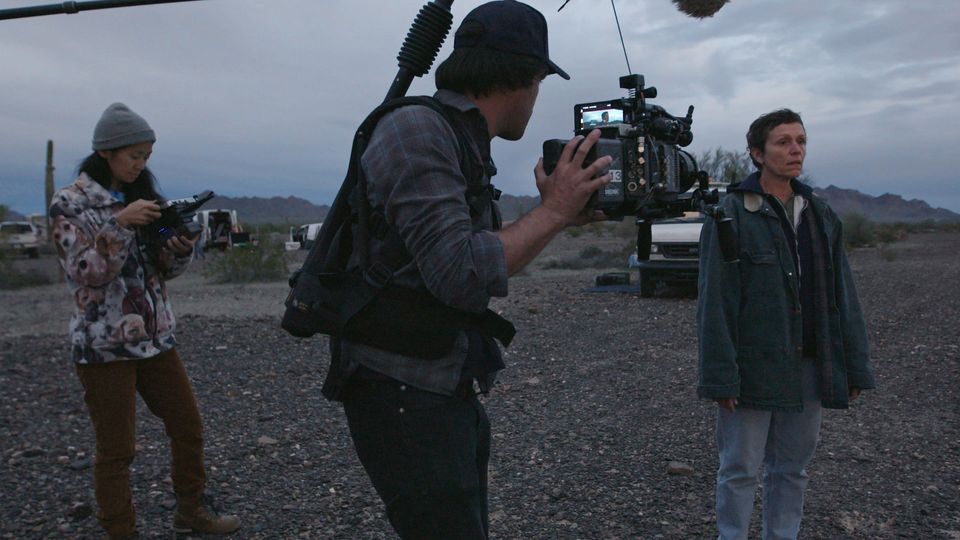
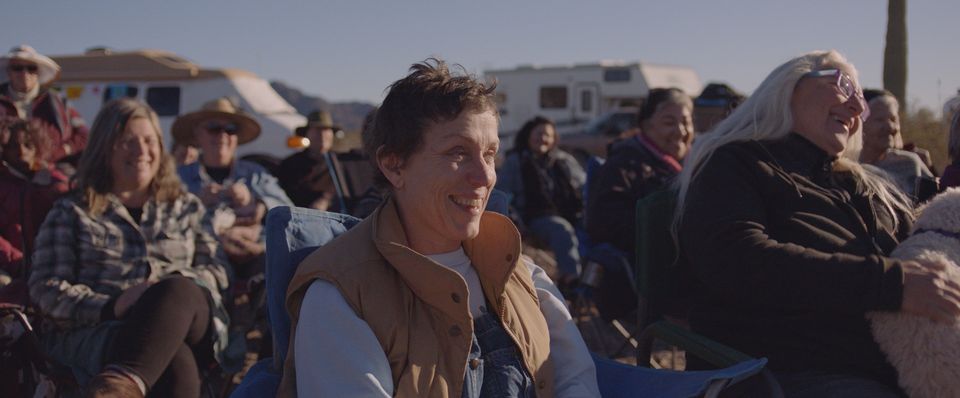
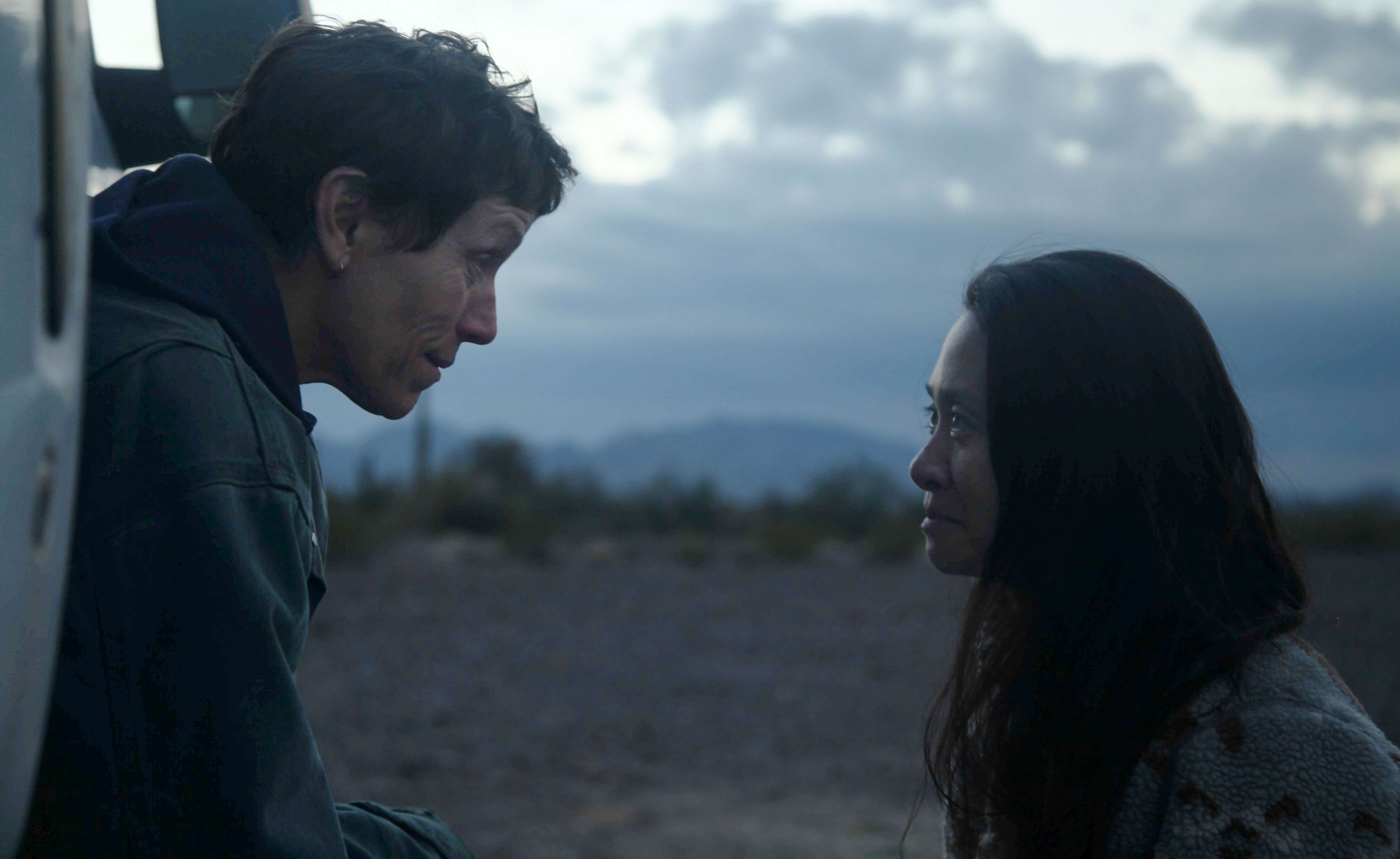
What are the conversations like when you’re approaching potential cast members? Trust seems like a really important factor to these films.
When we’re doing open calls, we’ll tell them a little bit about the film and let them know that we’re looking for people to really just play themselves. We get them to tell us a story. Tell us something funny that happened to you recently or what’s your favorite place to travel. Something to get people to talk about themselves, which sets them into understanding how the process is going to work.
Chloé has this way about her where people will really open up. I think it’s because she’s a really good listener and that’s really how she creates this trust with the actors. She will remember exactly what people say and how they say it, which then ends up in the script.
The past three movies you’ve made together place a lot of value on community. What is your process for treating these communities you’re meeting with respect and also earning their trust?
It’s true, we’re going into communities that are not our own. With working on the Pine Ridge Reservations, it took a lot of time being there and making friends. But really just being humans. Not just being there to make the movie, but to actually sit at someone’s dinner table with them. The process of making Nomadland was faster, but it was still the same sense of connection.

What things have working with the non-professional actors taught you about your approach with professional actors like Frances McDormand?
There’s a bit more of a vulnerability. An actor like Frances McDormand is trained and she knows what she is going into. Whereas, a non-professional actor might need to be assured that they’re never going to be put into an uncomfortable situation. But honestly, that doesn’t often come up because by the time we’re working together, the trust has been built. In so many ways, working with non-professional actors and professional actors is very similar. You want to make sure that they’re comfortable, that they have anything they need.
With Nomadland, we’re working in people’s homes. For example, we were shooting a scene in Swankie’s van and a glass of water tipped over onto her personal computer. One of our co-producers was then off for a few days getting data back and getting her a new computer. There’s a responsibility to protect them and their space.
I’m interested in the process of directing actors and non-professional actors at the same time. Were there still rehearsals going on or is that process different?
There aren’t rehearsals per se, but Chloé is doing the same thing with Frances that she’s doing with Swankie. She’s getting to know them. Swankie will tell Chloé a story and she’ll put that into the script. On set, Chloé will give them the script, but it’ll be more like, “I want you to tell the story about when you saw the swallows on your kayaking trip.” The actor will then go into their own story in a sense. Since Frances is also putting so much of herself into the character, they’re on a level playing field.

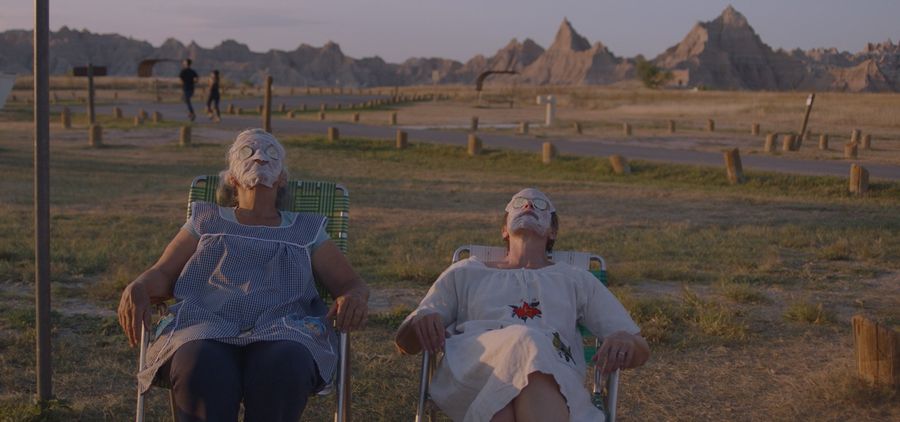
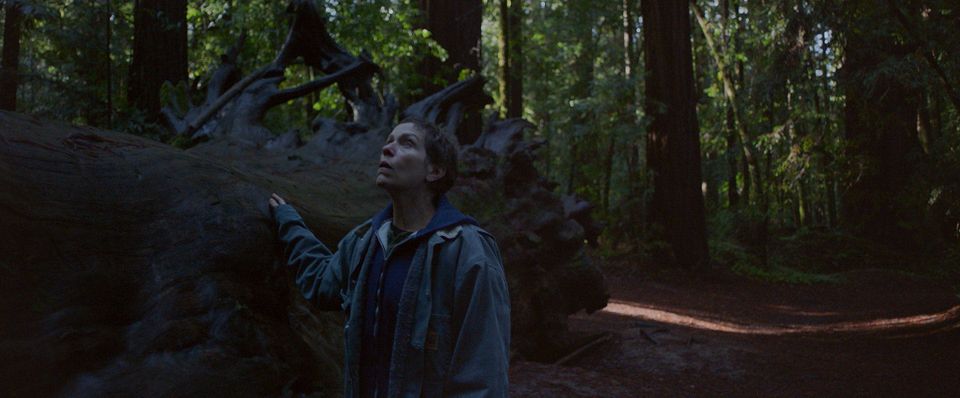
The film spans so many different locations. What was your location scout process?
It was pretty massive. The script was a roadmap for us. We knew we needed to find locations in [certain] states and we began there. We were all scouting. The local casting people were also scouting because it becomes the same thing. We’re scouting both locations and people because a lot of the times our locations come with the people or the people come with the locations. It took a few months. The scouting process is ultimately part of Chloé’s writing process. From it, more things would then come up and grow into the script.
I was going to South Dakota because I knew we were going to be shooting there in the Badlands. I had arranged for [Chloé] to meet with one of the volunteers at the Badlands National Park, who then influenced the character of Dave. That was also when we met with the astronomer to just learn about the various different jobs that people do while volunteering. Chloé fell in love with him and folded him into the script as well. It works organically.

I’ve heard Chloé talk about how the trick from the producing team is to make the audience feel like you were lucky enough to show up on the day and just get these shots, but that there are months of planning behind everything. What is your process for creating a documentary feel within the constraints of a narrative film?
No matter what kind of film you’re doing, pre-production is the key to making a successful film. In this case, a lot of it is also making sure to have plenty of options. For example, we were not going to have to be at the campgrounds in the Badlands for two weeks, but we wanted to have the ability to be there at any kind of time within the two weeks. While we were scheduling, we knew that things might change. The weather might not be the way that Chloé wants for a scene, so we’ll go on to shoot something else. That’s something that’s a little bit different than a traditional shoot where you know you’re there on X day from this time to that time. It’s a bit more fluid this way, but that takes planning and relationship-building with locations.
The Rubber Tramp Rendezvous is a good example of something that feels like we just stepped into it but took months to put together. We started that right away—looking for nomads that would want to be in the film, casting them and their vehicles, their homes. And then the logistical process of finding the right spot in the desert and getting a permit for that land. Then there was getting all of these 50 people and their vehicles, who are not normally extras in a film. That was a whole process of not only explaining the process through email and communication beforehand, but then having them come into the space. There were several stop points so that they could fill out paperwork, learn what was going to happen. Josh, our DP and Production Designer, had a whole diagram of where everybody was being placed. We separated them all into Group A, Group B, Group C, and then within those groups, A123. He placed each one of them and then a lot of them knew each other already which was great.
Once they all got there, they started to make their place their home. Take out their doormat outside their van and just do what they normally would when they settle down. They were living there for their length of filming and so it became a real RTR and a real community was created.


In the scene at the Rubber Tramp Rendezvous when the nomads are telling stories around the fire, are those all the real stories of the non-professional actors?
Yes, so I put together this group of nomads that are going to be in the film. And then once Chloé was on set, she talked to everybody.
From that, she chose specific people to be part of that circle, so those were all their own stories that they were telling. Everybody in the circle didn’t end up in the edit, but they all had a chance to tell their story on film. It was a really touching scene to shoot because Josh is there with each person with a camera on their face.
They each had their own moment to tell their own story. That encapsulates a lot of the process behind making these films.
It sounds like relationship-building takes extra time. When Chloé is getting to meet all the nomads, is that time that you usually wouldn’t be scheduling into a film if it wasn’t Nomadland?
Well for example, Chloé is getting to know all the various nomads while the rest of the crew is prepping the space. It’s always scheduled so that we’re not sitting around waiting. With Chloé, we tend to shoot longer for longer periods of time, but shorter days. We shot Nomadland for 50 days. We’re working with non-actors so they’re not necessarily used to long days. And so much is shot exterior, so we’re really dependent on the light.
We do try and make sure that we’re never just idle. There was one time we were idle when we were shooting the creek scene when Fern takes a bath in the water. We got there a little bit too early for the light. There was a bit of us having to wait for the light, which was nice though because it was a chance for everyone to go into the water themselves.
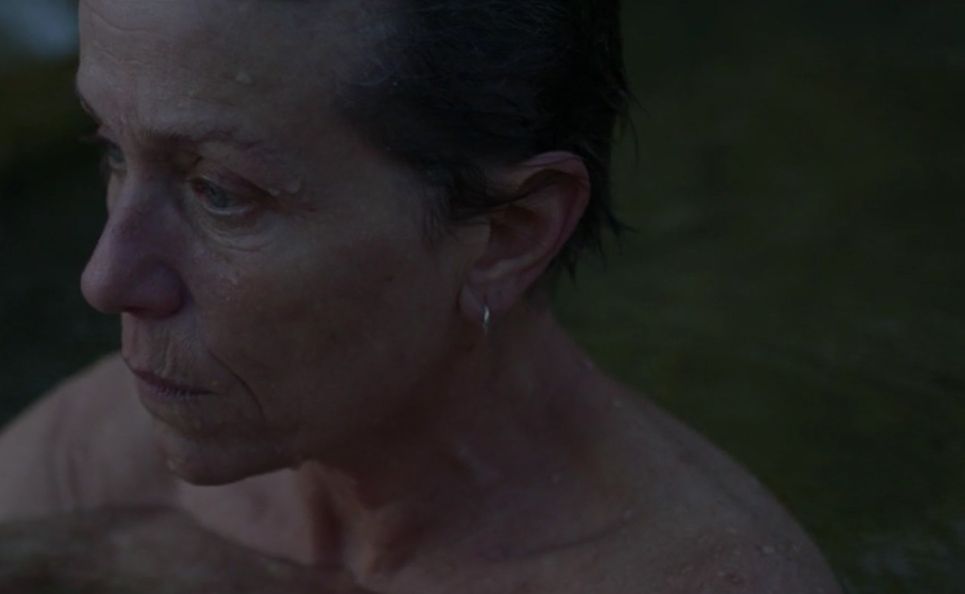
How do stay centered and grounded while producing a project like Nomadland?
One of the things I love about working with Chloé is that there is a bit of producing on the fly. Needing to pivot and go find a diner that we weren’t necessarily planning to shoot in. I find that really fun and exciting. I’m the kind of person that as soon as there’s something that needs to be done, my brain starts working out the problem. There’s not really time to freak out because I’m always going directly into how do we make this happen?
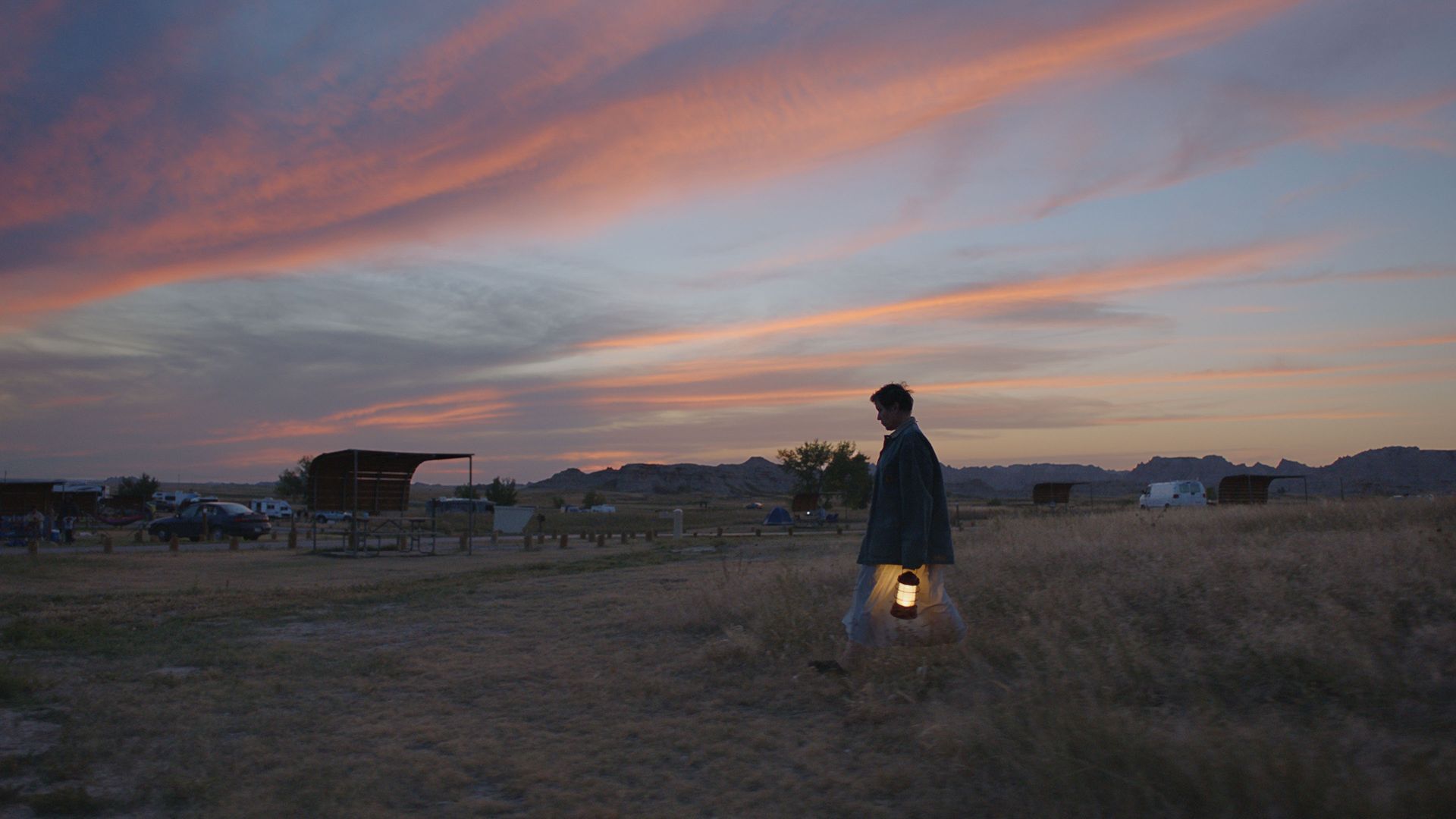
What is it like working with Chloé and Josh who are so in sync as creative and life partners?
It’s really beautiful to see them work. And seeing them and their relationship grow together. There’s such a deep respect that they both have for each other. Over time, you see that sometimes they don’t even have to speak, they’re already on the same wavelength. It’s a unique thing to see them work together, it’s really beautiful.
Chloé and Josh are very drawn to golden hour light and it seems like many shots in Nomadland were done in one take. Did you lose any days due to this?
The whole day is planned on when magic hour begins. And so we then go back six hours from then. We never missed a magic hour. We started calling it the magic hour hustle. Everyone knows the time and scene we’ll be filming that day. It’s all hands on deck; everybody is ready to do whatever needs to happen. We’re scheduling so that we’re utilizing all of that time around magic hour.
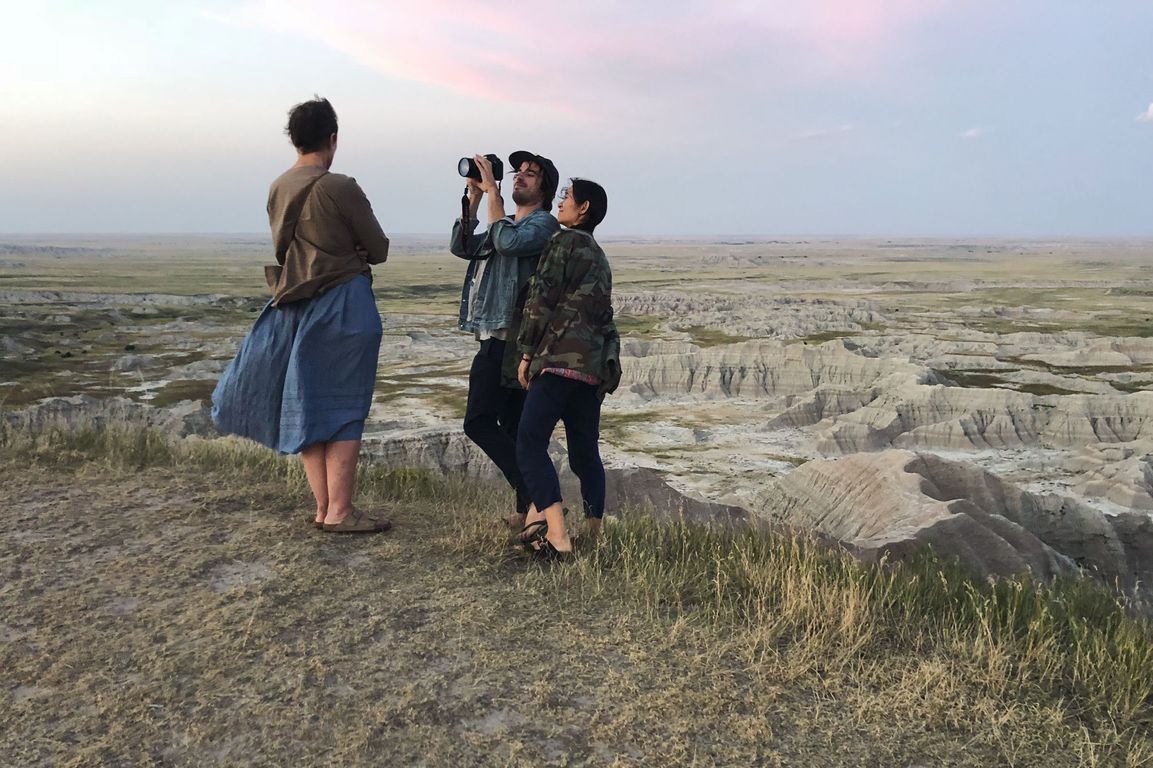
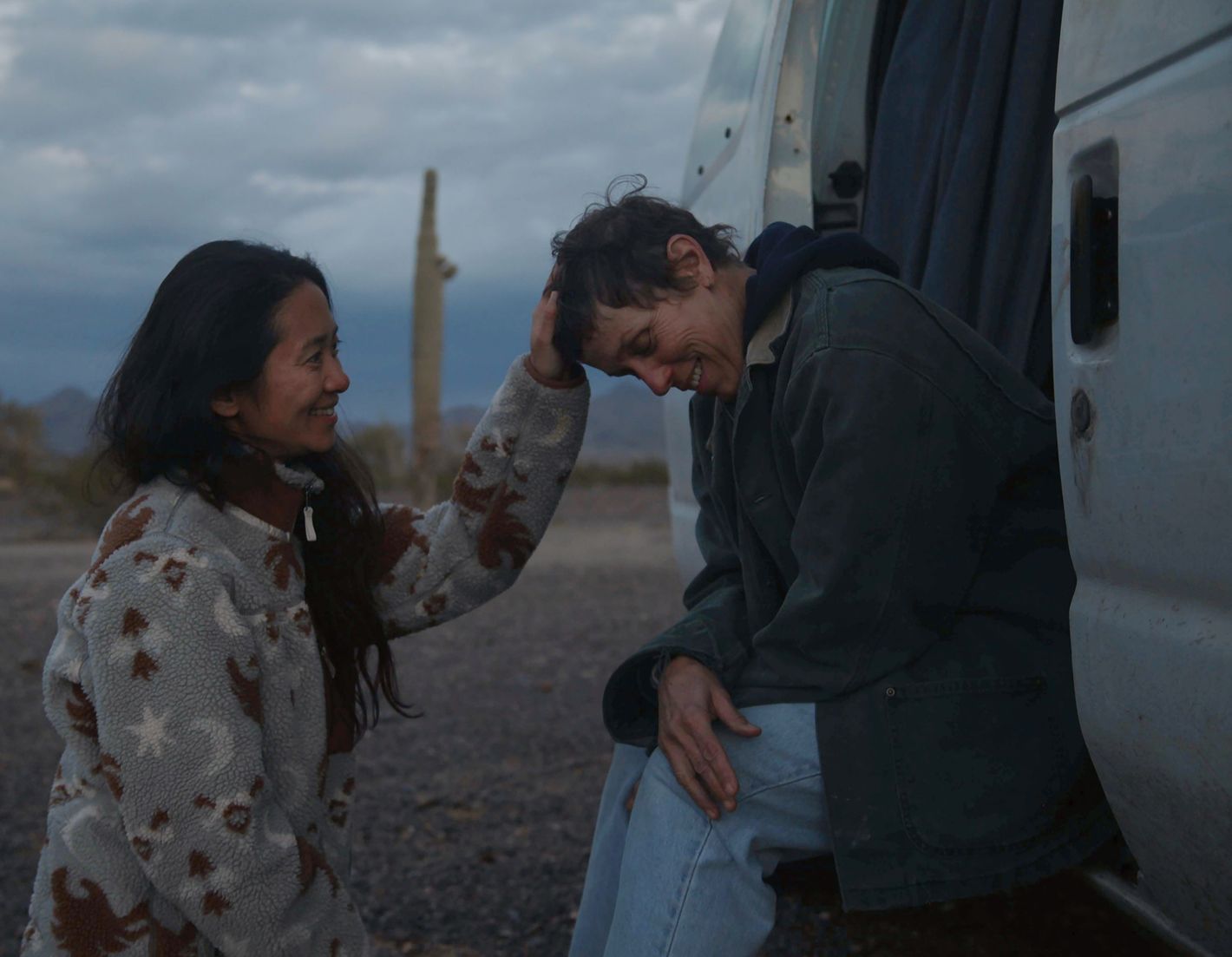
You have a lot of experience working with these small, nimble crews. On Songs my Brother Taught Me, it was more out of necessity, and now with Nomadland, it seems to be out of choice. What unique benefits do small crews allow for?
The whole idea is that we can sort of become part of the place, and nimble to be able to move around quickly and easily. It’s essential then to have a small crew and specifically people who are able to be invisible. A lot of our crew are listeners. They’re people who are there because they really love what they’re doing and love where we are. The traditional films that I work on need an hour of lighting setups and so it makes sense that the crews are bigger. With Nomadland, we could go into Wall Drug with a couple lights, maybe not even, and begin shooting right away. With the few people, every person is essential, and everyone feels that.
It seems like the crew embodied so many of Chloé’s core values of compassion and empathy. How do you get a full crew on board that you know values the process and has the same core values?
It takes time. I love the process of casting crew in all kinds of filmmaking experiences. But here, there’s a lot of talking to people about what the set is going to be like, how it’s going to be run, and getting a sense from them if that’s something they find interesting or exciting. It’s not for everyone. But when you do find those people, I would call them unicorns, these are people that can wear many hats. There’s specific people who like that.

What is a good producer to you?
Someone who understands the director’s vision and does whatever they can to enable them to make their vision, whether that’s continuing to keep the engine going by having enthusiasm or if it’s finding more locations than you need. A good producer is someone who respects the vision and can find all the ways to help the director accomplish it.
What advice would you give to any aspiring producer?
To not wait for permission. There’s a lot of really wonderful and creative things that can come out of going for it and believing in yourself. With Songs My Brothers Taught Me, we lost the money, but then found a way to make that challenge an opportunity. That takes not waiting for someone to say go, but knowing when you and a filmmaker are ready and finding a way.
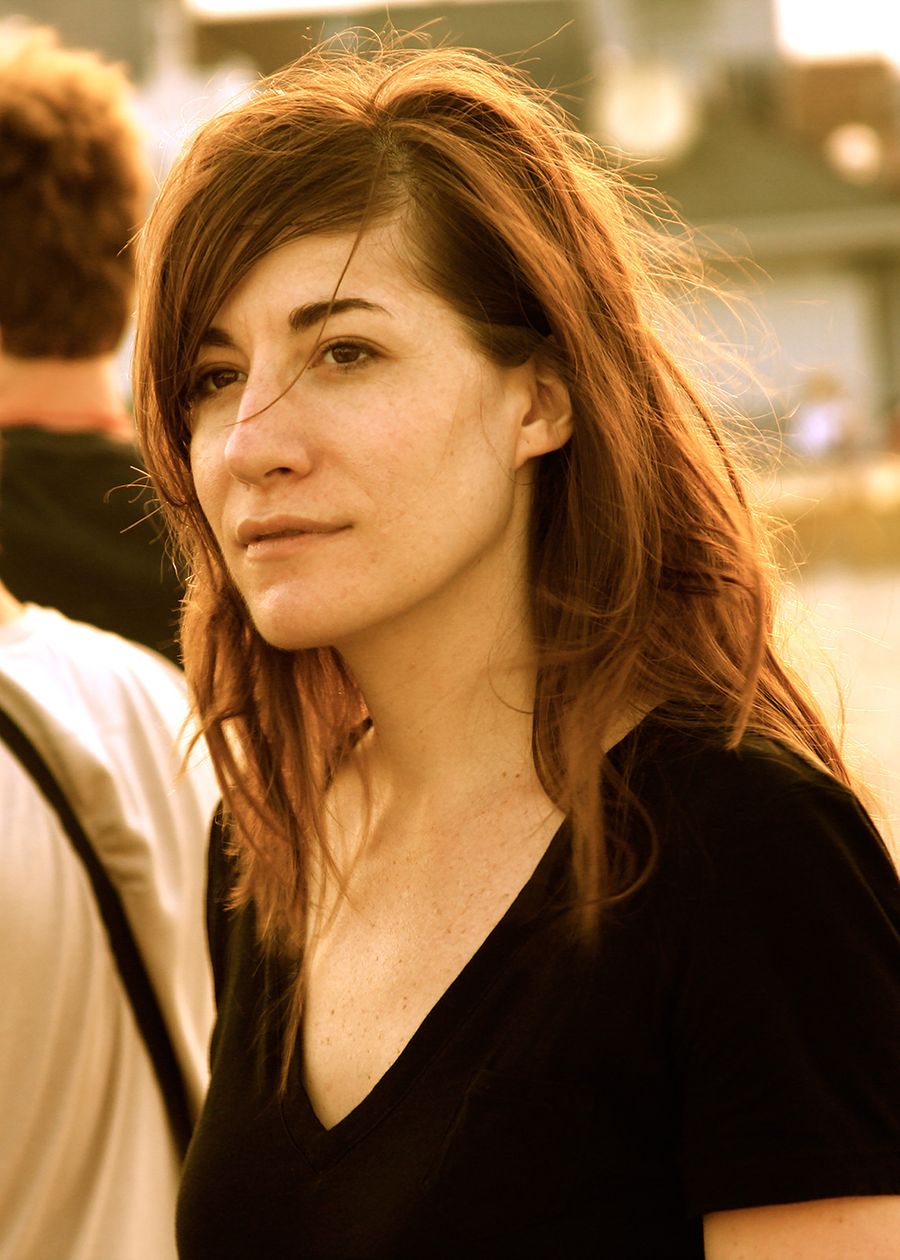
Mollye Asher
Mollye Asher is a Gotham Award winning producer and winner of the 2020 Producers Award from the Film Independent Sprit Awards. Most recently, she produced Carlo Mirabella-Davis’ SWALLOW (IFC Films), which won ‘Best Actress’ at the 2019 Tribeca Film Festival, and Chloé Zhao’s THE RIDER (Sony Pictures Classics). THE RIDER premiered in the 2017 Cannes Directors Fortnight and won its top prize. It went on to be nominated for four Independent Spirit Awards, including ‘Best Picture’ and won ‘Best Feature’ at the 2018 Gotham Awards. Other credits include the 2014 SXSW Grand Jury Prize winner, FORT TILDEN (Orion), by writer/director team, Sarah-Violet Bliss and Charles Rogers, Anja Marquardt’s Spirit Award nominated film, SHE’S LOST CONTROL (Berlinale, Monument Releasing) and Chloé Zhao’s debut feature Songs MY BROTHERS TAUGHT ME (Sundance, Cannes, Kino Lorber).
She recently co-founded the production company, The Population, with Mynette Louie and Derek Nguyen and is currently in post-production on Josef Kubota Wladyka’s thriller, CATCH THE FAIR ONE. It stars champion boxer, Kali Reis and is executive produced by Darren Aronofsky and Protozoa. Mollye earned her MFA in Film from NYU and is a member of the Academy of Motion Pictures.
María Alvarez
María Alvarez is an internationally recognized Cuban-Dutch filmmaker. She graduated from the University of Southern California with a BFA in Film & Television Production in May 2019. Her films have screened at dozens of festivals such as the Los Angeles Film Festival and Cleveland International Film Festival, won awards from institutions such as Google, and screened in museums like MoMA. Her short film, ‘Backpedals,’ screened at the 2018 Festival de Cannes in the Court Métrage and was a finalist in the 2018 Horizon Awards, an all-female Sundance sponsored fellowship. She worked as a Director’s Assistant to Benedict Andrews on Seberg, starring Kristen Stewart and shot by Rachel Morrison. She is in the festival circuit with her latest short film, ‘Split Ends,’ which was a 2021 Horizon Award Finalist and premiered at the NALIP Latino Media Fest. She is currently the Creative Editor at FREE THE WORK, a global talent discovery platform for underrepresented creators founded by director, Alma Har’el.

